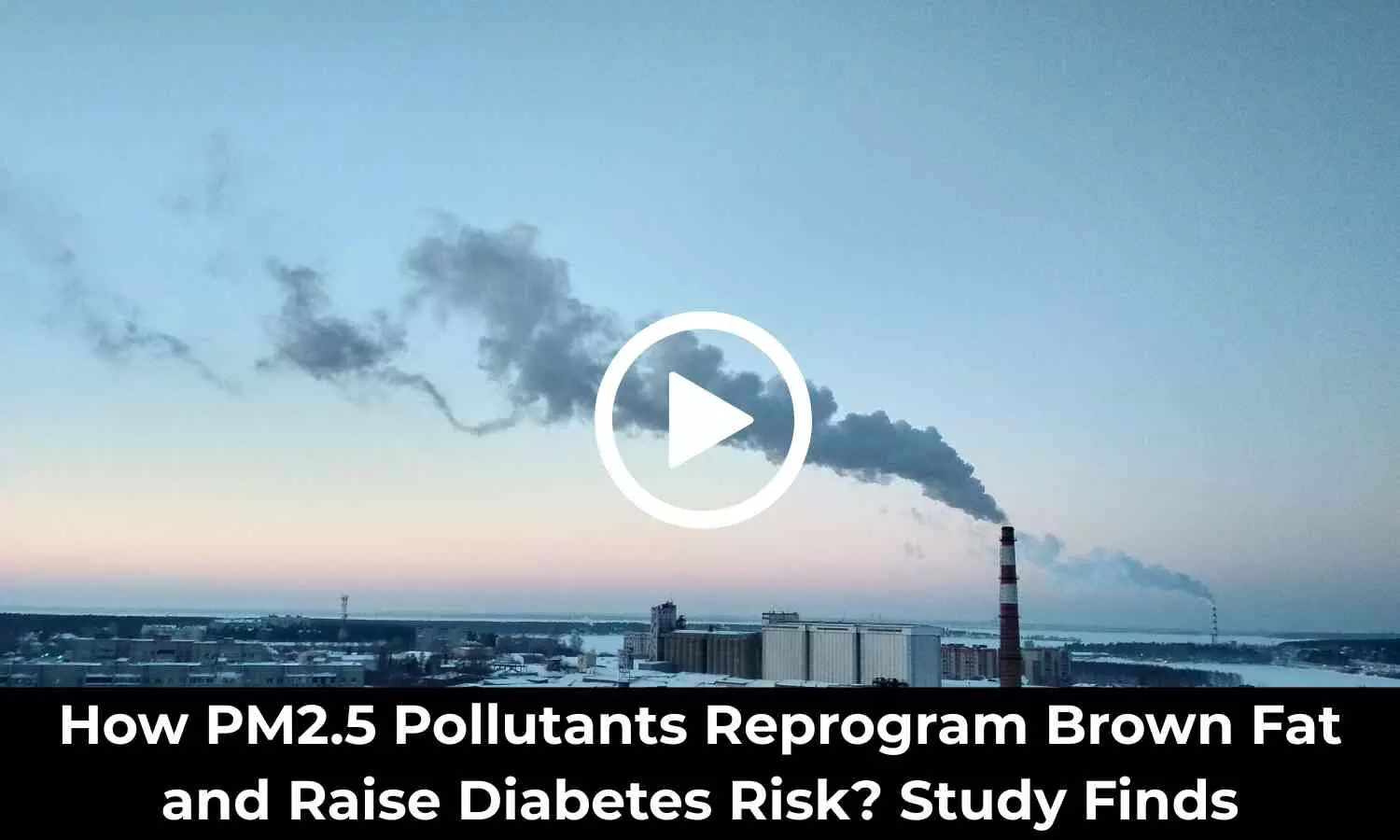How PM2.5 Pollutants Reprogram Brown Fat and Raise Diabetes Risk? Study Provides Insights
- byDoctor News Daily Team
- 11 October, 2025
- 0 Comments
- 0 Mins

A new study published inJCI Insightshas revealed that long-term exposure to fineair pollutionmay significantly impairmetabolic health, providing fresh insights into how pollutants can trigger insulin resistance and increase the risk oftype 2 diabetes. The study highlights how particulate matter known as PM2.5 can disrupt the function of x tissue through complex epigenetic changes. Researchers exposed laboratory mice to either filtered air or concentrated PM2.5 particles, tiny pollutants less than 2.5 micrometers in diameter for six hours a day, five days a week, over 24 weeks. This experiment was designed to simulate chronic urban pollution exposure in humans. The team focused on brown fat, a specialized form of adipose tissue critical for regulating body heat and glucose metabolism. After nearly five months, mice exposed to PM2.5 showed clear signs of metabolic dysfunction, including insulin resistance and altered brown fat activity. “In particular, we found that the expression of important genes in brown adipose tissue which regulate its ability to produce heat, process lipids and handle oxidative stress were disturbed,” said Francesco Paneni, professor at the Center for Translational and Experimental Cardiology of the University of Zurich. The affected mice also exhibited increased fat accumulation, tissue damage, and early signs offibrosis. To understand the underlying biological mechanisms, the scientists examined changes in gene regulation within brown fat cells. They discovered that air pollution caused significant epigenetic modifications—particularly in DNA methylation and chromatin structure. Two key enzymes, HDAC9 and KDM2B, were found to be responsible for these changes by modifying histone proteins, which affected how genes were activated or silenced. The findings present new evidence that air pollution can be a driver of metabolic disease by altering gene function in fat cells. Reference:Palanivel R, Dazard JE, Park B, Costantino S, Moorthy ST, Vergara-Martel A, Cara EA, Edwards-Glenn J, Biswal S, Chen LC, Jain MK. Air pollution modulates brown adipose tissue function through epigenetic regulation by HDAC9 and KDM2B. JCI Insight. 2025 Sep 23;10(18).
Disclaimer: This website is designed for healthcare professionals and serves solely for informational purposes.
The content provided should not be interpreted as medical advice, diagnosis, treatment recommendations, prescriptions, or endorsements of specific medical practices. It is not a replacement for professional medical consultation or the expertise of a licensed healthcare provider.
Given the ever-evolving nature of medical science, we strive to keep our information accurate and up to date. However, we do not guarantee the completeness or accuracy of the content.
If you come across any inconsistencies, please reach out to us at
admin@doctornewsdaily.com.
We do not support or endorse medical opinions, treatments, or recommendations that contradict the advice of qualified healthcare professionals.
By using this website, you agree to our
Terms of Use,
Privacy Policy, and
Advertisement Policy.
For further details, please review our
Full Disclaimer.
Recent News
BFUHS notifies on round 5 nursing admissions, deta...
- 24 October, 2025
24-year-old Rajasthan MBBS student goes missing in...
- 24 October, 2025
TCT Conference 2025: Here are Top 10 Global Leader...
- 24 October, 2025
Lupin unveils authorized generic version of Ravict...
- 24 October, 2025
Daily Newsletter
Get all the top stories from Blogs to keep track.


0 Comments
Post a comment
No comments yet. Be the first to comment!